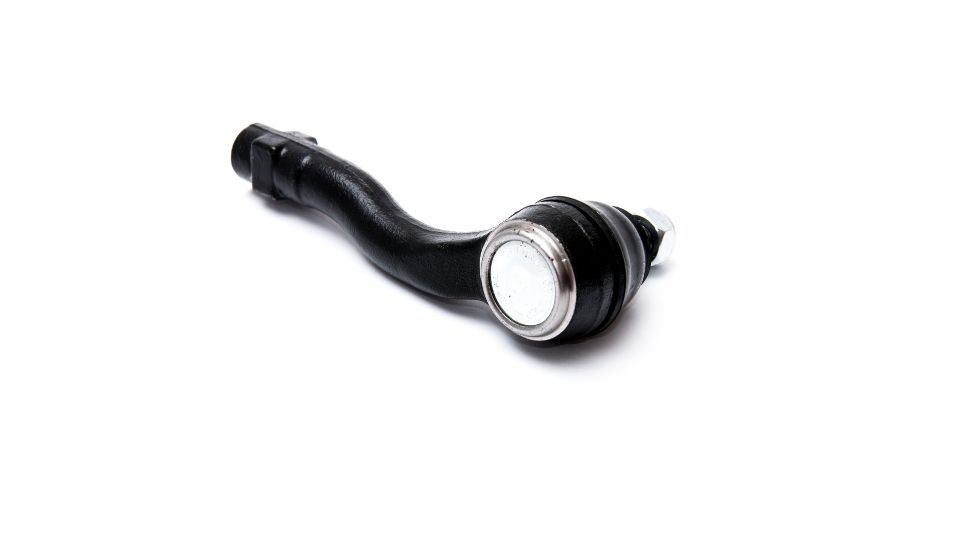If you’re experiencing rattles in your steering wheel, it’s likely that you’re missing a couple of tie rods. Do you need to replace both the inner and outer tie rods or can you just replace the first one? Let’s find out.
Should I replace both inner and outer tie rods?
Yes, it’s best to replace both inner and outer tie rods together, even if the outer tie rod is in good condition. The reason is that the inner and outer tie rods are part of a system, and replacing only one will might give you a mismatched system.
To get the most out of your new tie rod ends, it’s best to replace both components at the same time.
What are Tie Rods?
Tie rods are part of your car’s suspension system. They connect the steering knuckle (the part that holds the wheel) to other parts of the suspension.
They help turn your wheels as you steer, but they also do a lot more. Tie rods keep your tires from wearing too much when you drive over bumps and uneven terrain.
If you have worn tie rods, your tires can wear out faster than normal. You may have trouble steering and even notice unusual noises when you turn the wheel or drive over rough roads.
What is the Main Function of Tie Rods?
The tie rod is a crucial part of your car’s steering system. It’s responsible for connecting the steering rack to the knuckle, the part that holds the wheel.
The tie rod is usually made up of two separate components: an inner and outer tie rod. There are two of these units on each side of a car, one on either end of the axle.
Steering problems can be traced back to the tie rods in many cases, whether they’re internal or external (outer) tie rods.
Malfunctioning tie rods can cause your car to drift in one direction or another, which can be very dangerous if you’re driving at high speeds and trying to avoid obstacles or other cars.
The symptoms are easy enough to Note: if your vehicle pulls to one side when you’re driving straight, or if it meanders toward one side or the other without you correcting it, chances are that your tie rods are going bad.
How Do You know if You Need Inner or Outer Tie Rods?
steering. As the name suggests, tie rods are the structural parts of your car. When they fail, your car might start veering off course, or it might not steer at all.
When you try to turn the steering wheel, you may feel a grinding sensation, or it may make clunking noises in one direction as opposed to the other. You may also notice that your steering wheel is no longer centered when going straight ahead.
If you’re experiencing any of these things, you’ll need to have an auto repair shop or mechanic inspect your suspension system for bad tie rods
The best thing to do is take your car in for an inspection. If the mechanic says you need new tie rods, ask them specifically whether it’s inner or outer or if it’s a simple fix, like tightening them, then you may be lucky enough to not need new ones at all.
Note; its recommended to change both tie rods if one goes bad. If left unchecked, bad tie rod ends will continue to wear on your tires and lead to additional problems down the road with other suspension components.
How much does it cost to replace tie rods in your car?
The average cost for a tie rod replacement is between $40 and $120. Labor costs are estimated between $45 and $85. Your actual price will depend on your car’s year, make, model, and the mechanic’s labor rates.
Tie rods do not usually need to be replaced more than once during the life of the vehicle, but there are exceptions. If you don’t already have broken tie rod ends but have had problems with them before, it might be a good idea to have them replaced as a preventative measure.
Conclusion
Whether you choose to replace both inner and outer tie rods is up to you. You should be aware of the benefits of replacing the inner or outer tie rod, however, and weigh the costs versus the benefits to determine whether that’s a worthwhile expense for you.

Robert Anderson is a world class motorhead who rebuilt his first carb at age 10, his first engine at age 15, and completed his first full hotrod build when he was just 18! Previously, he has ran a part warehouse, delivered pizzas, and managed the service department for a $20 million/year revenue dealership. Robert knows cars like few others and he is passionate about sharing his knowledge.

